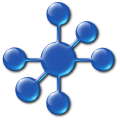Argon compounds This section lists some binary compounds with halogens (known as halides), oxygen (known as oxides), hydrogen (known as hydrides), and some other compounds of argon. For each compound, a formal oxidation number for argon is given, but the usefulness of this number is limited for p-block elements in particular. Based upon that oxidation number, an electronic configuration is also given but note that for more exotic compounds you should view this as a guide only. The term hydride is used in a generic sense to indicate compounds of the type MxHy and not necessarily to indicate that any compounds listed behave chemically as hydrides. In compounds of argon (where known), the most common oxidation numbers of argon are: 0. HydridesThe term hydride is used to indicate compounds of the type MxHy and not necessarily to indicate that any compounds listed behave as hydrides chemically.
Fluorides
Chlorides
Bromides
Iodides
Oxides
Sulfides
Selenides
Tellurides
Nitrides
Carbonyls
Complexes
Standard Reduction Potentials
ReferencesThe standard reduction potentials given here for aqueous solutions are adapted from the IUPAC publication reference 1 with additional data and an occasional correction incorporated from many other sources, in particular, references 2-7.
WebElements ShopWebElements now has an online shop at which you can buy periodic table posters, mugs, T-shirts, games, molecular models, and more. |
|||||||||
|
|




 Argon
Argon Argon
Argon Argon
Argon Argon
Argon Argo
Argo Argón
Argón Argon
Argon Argônio
Argônio